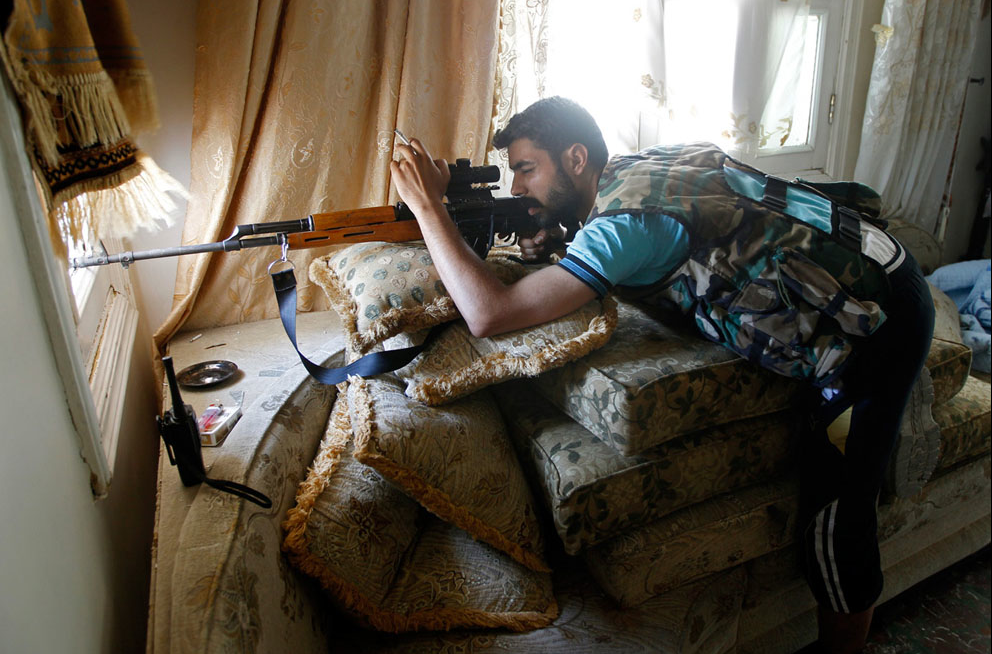I was having a conversation with a former student recently who was exasperated by the fact that the war in Afghanistan, approaching its twelfth anniversary, is the longest American history and yet it is rarely on the front pages of our newspapers and but for the occasional report of U.S. troops being killed—usually in small numbers—there is hardly any public debate or discussion about it. And the question, of course, is why? Why is it that a war that is costing us roughly $100 billion a year, and has taken nearly 2,000 American lives, while wounding another 15,000 seems to have no traction in the public consciousness?
I thought of this question when I came across this photograph circulating in a number of different slideshows this past week. The scene is from Syria, not Afghanistan, but what makes the image distinctive is the way in which it frames the act of war in an ordinary and everyday environment. The soldier here is a sniper, but he doesn’t wear a uniform, dressed instead in a camouflage vest that covers what appears to be athletic running gear. He is not on a conventional battlefield, but rather in what appears to be someone’s living room. And he has converted the equipment of everyday life into weapons of death as he perches himself on a couch and uses seat cushions and pillows to balance and aim his high powered rifle. Curtains seem to provide him with a modicum of cover. And more, he exudes an uncanny nonchalance, simultaneously focused on the task before him and yet altogether relaxed. Notice for example how he holds his cigarette while adjusting his scope, implicitly dividing his attention between the two. War for him has become routine, neither here nor there, a condition of everyday life that can’t be ignored and so becomes commonplace, part and parcel of living in a constant zone of conflict.
There is no parallel to this image or the experience it represents in the United States. The wars we have been fighting in the Middle East over the past eleven years are wars fought at a distance. We are typically reminded about them only when someone we know is directly affected by them—killed or maimed—but even then for most of us the effect tends to be temporary as we mourn our loss and then quickly return to going about our lives without any serious concerns for our immediate personal safety. In short, these wars have not become part of our everyday being. And as such, they become too easy to forget, or worse, to ignore.
Photo Credit: Goran Tomasevich/Reuters

Technically, the curtains provide concealment, not cover
Jason: I’m not sure I understand whose technical language you mean here. But in everyday parlance we do talk about things like the “cover of darkness” which implies concealment. And my point here was to think about how things like war get complicated when they become everyday and ordinary. For those of us who experience war at a distance, and who think of it as something fought by a professional military force you may be absolutely correct. The military has a technical language as you suggest. But when war becomes everyday and ordinary, my guess is that such distinctions get lost as war itself becomes normalized. In any case, I appreciate your comment inasmuch as it helps to tease out the point more. Best, JLL